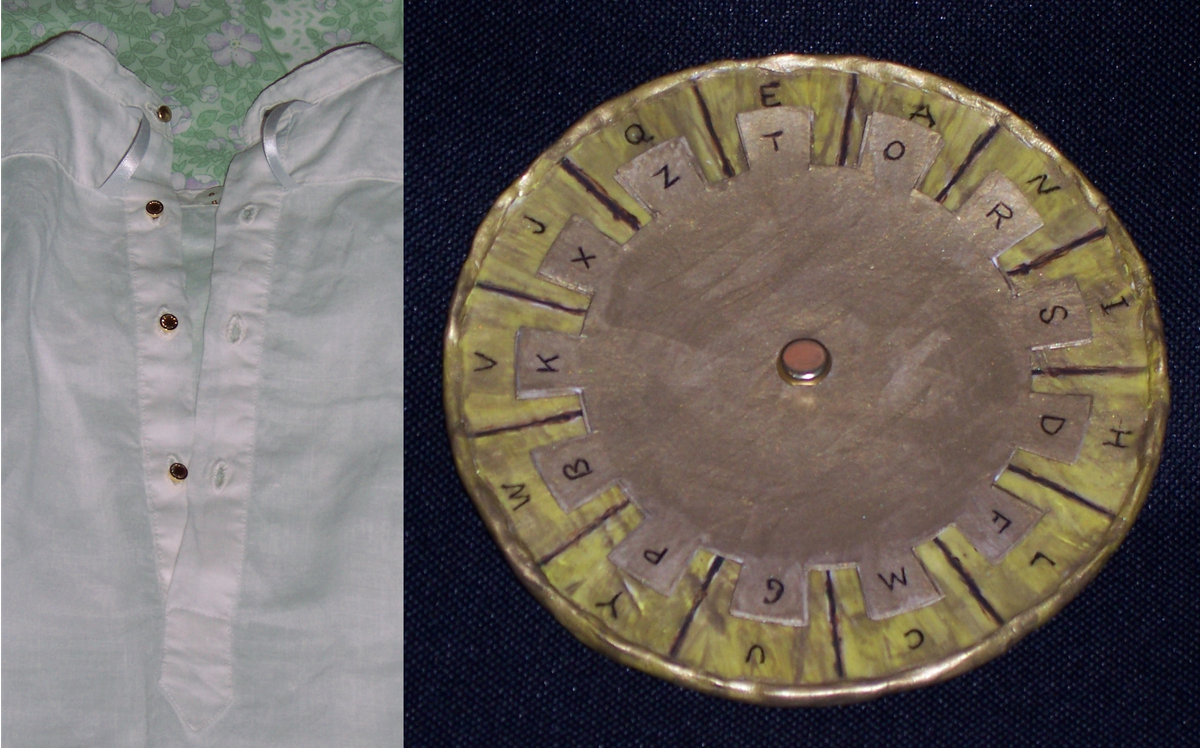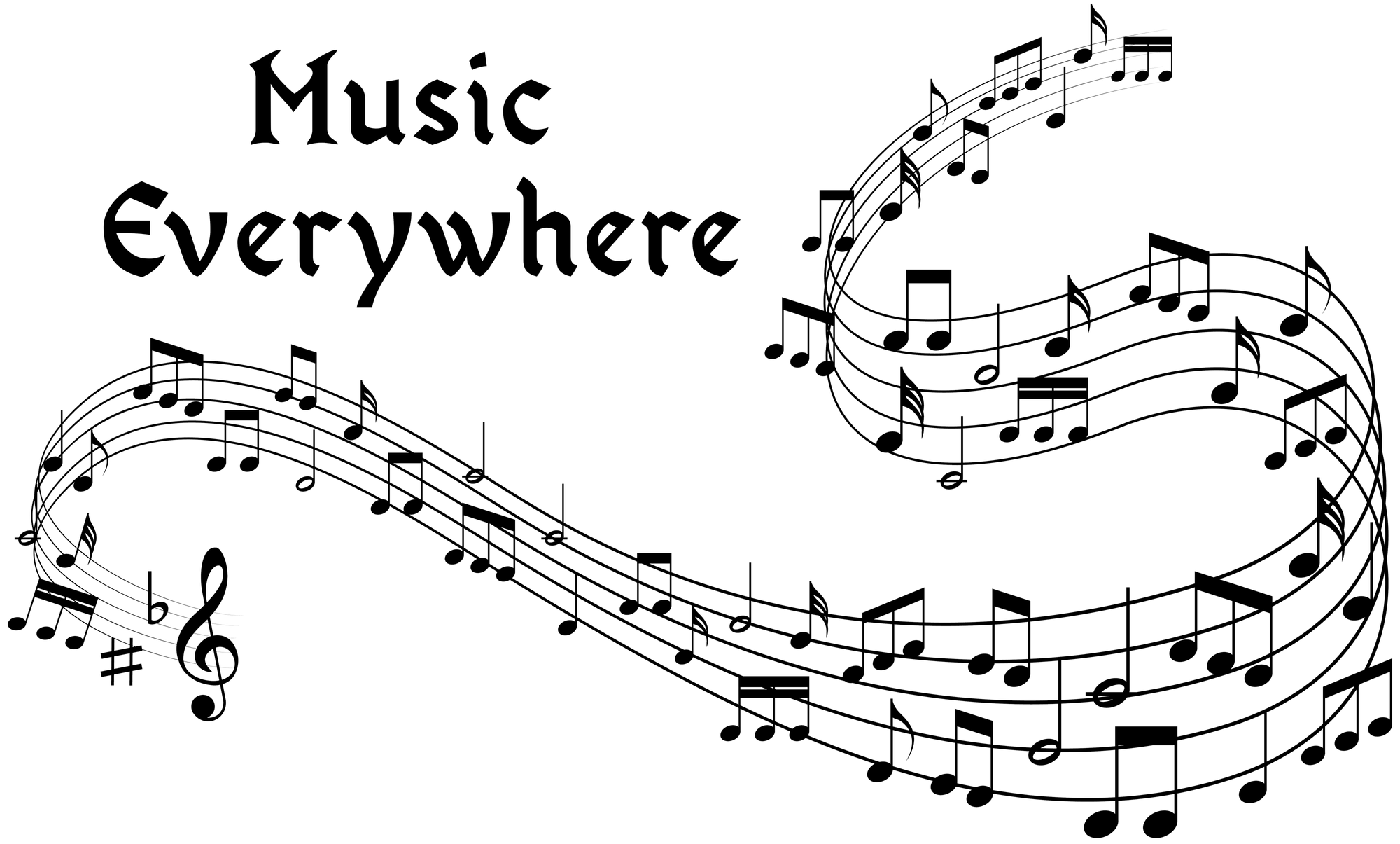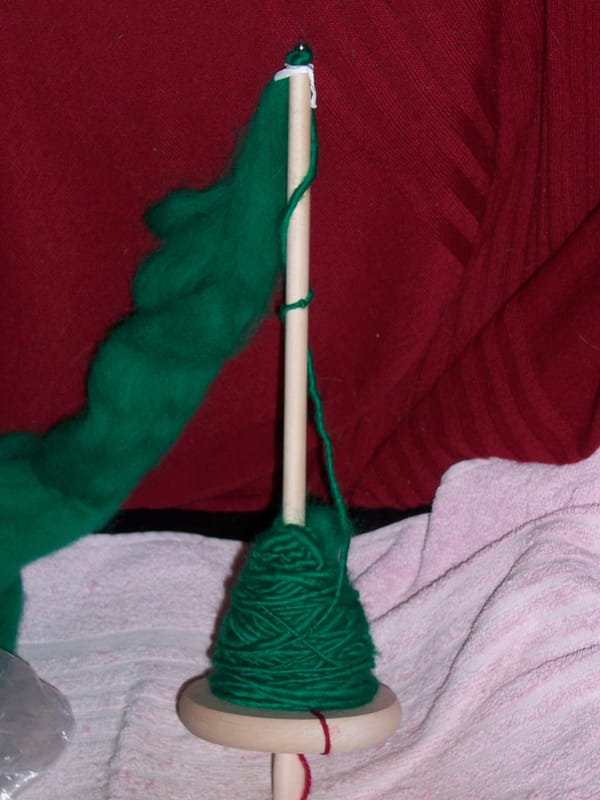I, Spy (part 2)

When you are dressing a steampunk spy, then naturally he has to have an authentic Victorian shirt. There was a further small consideration, in that Mr Wooster doesn't wear neckwear; this is entirely understandable, as spies have enemies, and naturally he doesn't want to make it easy for one of them to strangle him. What he does wear is a metal pin brooch at the throat (he seems to have at least two of these, since the colour is not always the same) in the form of a round Union Jack. I have a friend with access to a laser cutter who made mine from good-quality cardboard, painted with brass paint. But if you're going to wear a pin brooch at that point, you don't want a collar stud in the way; so I deduced that Mr Wooster's shirt must fasten at the back. And, indeed, some Victorian shirts did, and there's an option for it in the pattern I linked.
I really enjoyed both making and wearing this shirt; it got a lot of use outside the cosplay. It was pure linen (authenticity, again), so it was cool in the summer, and the detachable collar turned out to be very practical. Originally, collars and cuffs were made detachable to save on laundry, since they tended to be the parts of the shirt that got dirty most readily. But it turned out that, in the early 21st century, a detachable collar was great when you needed a haircut! I would go and get my hair cut in this shirt and just pop the collar off to make it easier for my hairdresser to have at it with the clippers (I've worn it very short for quite a while, and I don't expect that to change - so much easier to look after).
You're looking at the back closure in the photo. The purpose of those ribbons is to hold your ascot, or bow tie, or other neckwear in place; Mr Wooster may have been nervous about neckwear, but when I wasn't being him I enjoyed wearing it. So I duly installed the ribbons. The pattern even has instructions on how to tie a bow tie (which I photographed for some reason, so I still have them). They don't take much fabric, so I made a few and had fun with them, including a pink one. Well, I always wanted to be Frank Muir when I was younger. The shirt also had double cuffs, which meant they fastened with a stud and a cuff link; that used to be very fashionable at the end of the 1900s. Again, there are several variations in the pattern. I picked the one with the nice rounded corners. The whole thing did mean an awful lot of hand-sewn buttonholes, but it was all worth it in the end.
As for the code wheel... that is not a great photo, but you can at least see how it worked; it was cardboard, of course, but it did look a lot more like brass in real life. The flash was unkind to it. I have to say that dividing a disc into 13 equal sections is quite a challenge; any fool can divide 360 by 13 and get any number of decimal places they want, but constructing that as an accurate angle is a lot harder. (It's still not quite right, but it is at least near enough to work.) The thing was, a spy obviously needed a good coding device; it had to be simple, portable, and as near uncrackable as it could be made. Now, any regular cipher is fairly easy to crack - make that very easy if you have enough text; so the wheel works like this. You agree a starting position and a rule. The rule can be as simple as "turn the inner wheel one step clockwise after every letter", or as complicated as you can devise; all that is important is that the wheels move relative to each other and there's an agreed system for doing so. The letters then encipher both ways, so, with the wheel in the position shown, E codes to T and T to E, and so on. This means it's straightforward to decipher, as long as you know the starting position and the rule - you just run through doing exactly the same thing as the person who encoded the message did, and the result drops out. Essentially it's thirteen different ciphers all mixed up, and unless you know the rule you haven't a hope of working out which text belongs to which cipher, so it is incredibly hard to crack.
It wasn't till a great deal later that I discovered, to my astonishment, that I'd basically reinvented the Enigma Machine, or at least a pocket version of it (the machine had multiple wheels). Well, that seemed to suit Mr Wooster. It was just the sort of thing he might have done.
I didn't make the black wig; I managed to find one that worked really well. I did, however, have to make the sideburns myself, which involved painstakingly stranding theatrical hair through (if I recall correctly) a couple of pieces of muslin, and in this way I discovered that I am not, in fact, allergic to stage glue. (I'd been a little worried that I might be.) And then, of course, there was the make-up, which was a beastly nuisance; Mr Wooster is several shades darker than I am, and making up my face wasn't so bad, but the hands...! No matter how carefully I set it, it still ended up all over my nice white cuffs. I don't like make-up at the best of times, but stage make-up is another thing again.
Still, I had a cracking time at Massive Geekcon. Pity I came back with asthma, but that's London air quality for you. (I don't actively have it now; the air here is a lot better than it was in Sheffield, where I was living at the time.) I'd be happy to do it all again, just not in London, and this time in a wheelchair... h'mm... maybe next time I cosplay Charles Xavier? 😁




